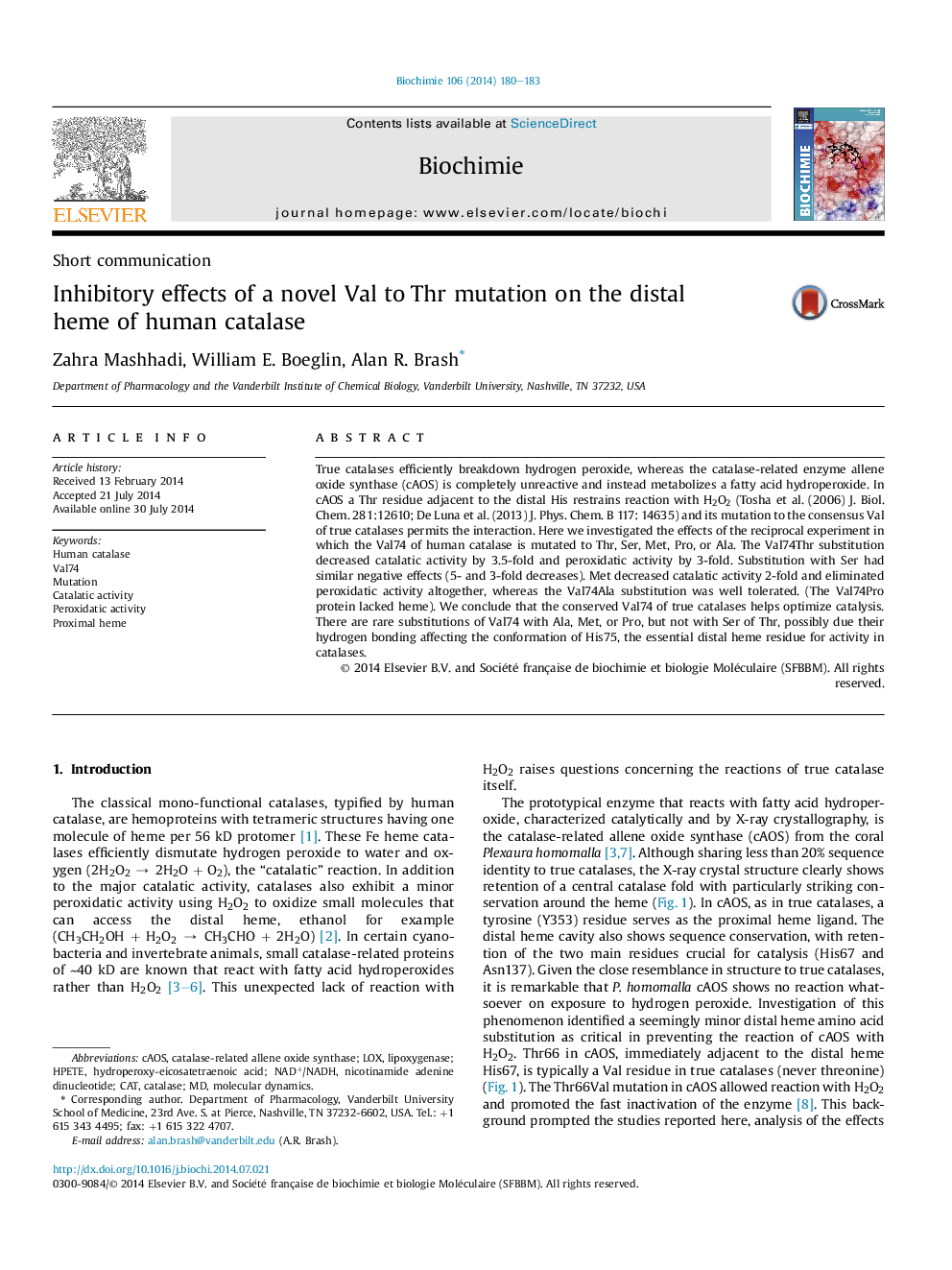| Article ID | Journal | Published Year | Pages | File Type |
|---|---|---|---|---|
| 8305200 | Biochimie | 2014 | 4 Pages |
Abstract
True catalases efficiently breakdown hydrogen peroxide, whereas the catalase-related enzyme allene oxide synthase (cAOS) is completely unreactive and instead metabolizes a fatty acid hydroperoxide. In cAOS a Thr residue adjacent to the distal His restrains reaction with H2O2 (Tosha et al. (2006) J. Biol. Chem. 281:12610; De Luna et al. (2013) J. Phys. Chem. B 117: 14635) and its mutation to the consensus Val of true catalases permits the interaction. Here we investigated the effects of the reciprocal experiment in which the Val74 of human catalase is mutated to Thr, Ser, Met, Pro, or Ala. The Val74Thr substitution decreased catalatic activity by 3.5-fold and peroxidatic activity by 3-fold. Substitution with Ser had similar negative effects (5- and 3-fold decreases). Met decreased catalatic activity 2-fold and eliminated peroxidatic activity altogether, whereas the Val74Ala substitution was well tolerated. (The Val74Pro protein lacked heme). We conclude that the conserved Val74 of true catalases helps optimize catalysis. There are rare substitutions of Val74 with Ala, Met, or Pro, but not with Ser of Thr, possibly due their hydrogen bonding affecting the conformation of His75, the essential distal heme residue for activity in catalases.
Keywords
Related Topics
Life Sciences
Biochemistry, Genetics and Molecular Biology
Biochemistry
Authors
Zahra Mashhadi, William E. Boeglin, Alan R. Brash,
